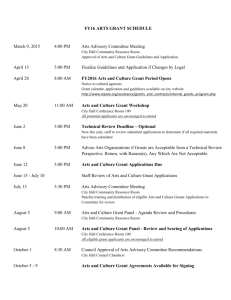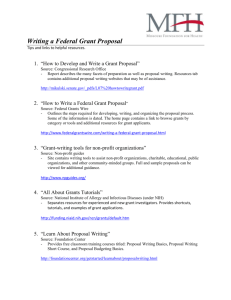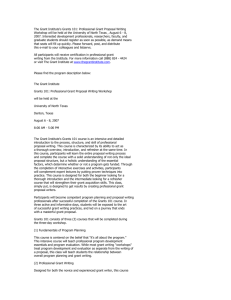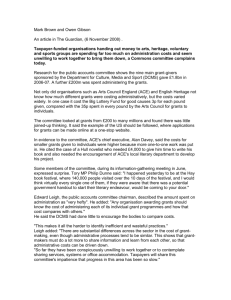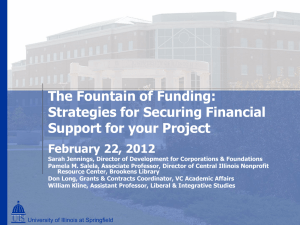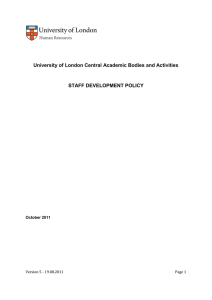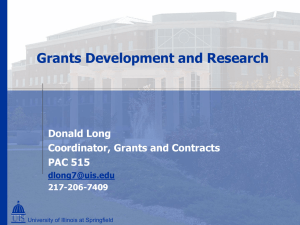Developing a Project Plan and Budget
advertisement
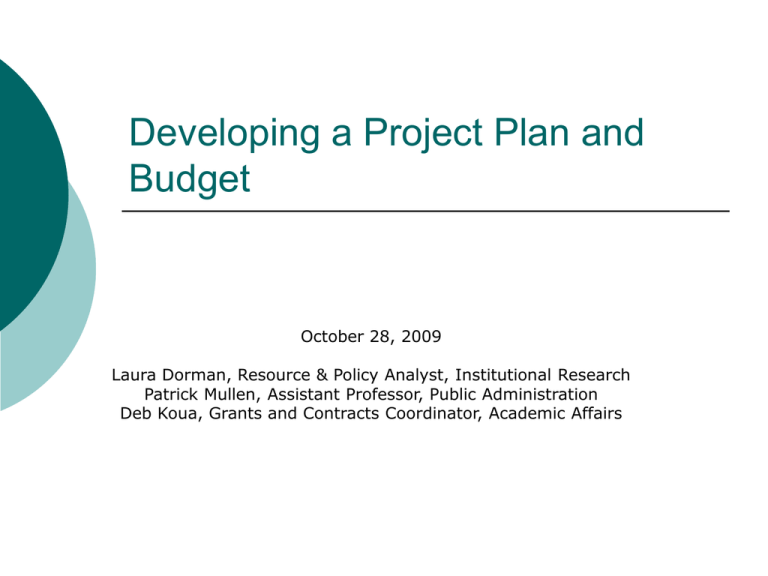
Developing a Project Plan and Budget October 28, 2009 Laura Dorman, Resource & Policy Analyst, Institutional Research Patrick Mullen, Assistant Professor, Public Administration Deb Koua, Grants and Contracts Coordinator, Academic Affairs Developing a Realistic Plan for Data Collection Establishing your data collection plan should be viewed as a fundamental step in any research project. Laura Dorman Office of Institutional Research Data Collection Planning Ask this question: “Who will collect what, when, and from where? Advantages to Developing a Plan for Data Collection Understanding of needed tasks Identification of staff assignments Overview of the time needed to complete tasks Organization of resources to boost efficiency Minimization of errors and delays When Should You Develop Your Data Collection Plan? Data collection plan and budget go handin-hand. Develop the “first-draft” of your data collection plan while developing your project proposal. Make revisions of your data collection plan as needed during the project proposal stage. You’d rather make changes prior to funding as opposed to after a contract has been signed. Data Collection Plan Once you’ve defined your research questions and identified the data needed, think through these questions: How will you gather your data? Do you need permission (internal/external)? Is there an order or natural sequence to the data collection? How long will data collection take? Work Plans It is helpful to create a project work plan. One possibility is to identify the major task, subtasks, time-frame, person(s) responsible, and the resources needed. Another possibility is to link the task to the primary issue, also identifying activities, person(s) responsibility and time-frame. Work Plan Example 1 Major Task Task 1: Assessing Program Implementation Subtask Area Timeframe Responsibility Resources Task 1.a: Initial contact with correctional facilities Month 1 LD, EC personnel, travel Task 1.b: Compile list of interview subjects Month 1 LD, MP personnel Task 1.c: Conduct document review Month 1 MP, LD personnel, travel Task 1.d: Document analysis Month 1 LD personnel, travel Task 1.e: Finalize interview protocol Month 1 LD, EC personnel Task 1.f: Receive Human Subjects Permission Month 1 LD personnel Task 1.g.: Conduct interviews Months 2 & 3 EC, LD personnel, travel Task 1.h: Collect offender-based data from OTS Month 3 MP personnel, travel Work Plan Example 2 Issue Improving Court Performance Activity Task 1.a: Solicit Membership in Multidisciplinary Task Force Task 1.b: Research existing data sources Timeframe Month 1 Month 2 Responsibility Outcome AH Task force members notified AH, AR Sources of acceptable data identified by collaborative effort Task 1.c: Meet with Task Force Month 2 AH, AR Identification of pilot sites of representative demographics Task 1.d: Assemble Survey Test Group Months 3 & 4 AH, AR Meeting set Key Points Establishing a data collection plan should be a fundamental step in any research project. Your data collection plan and your budget go “hand-in-hand”. Your should develop your “first draft” data collection plan while working on your proposal. Always slightly overestimate the period needed for data collection and analysis to allow for unforeseen delays. Check with the “owners” of data for scheduling concerns. Talk with them early and often. Don’t underestimate the time needed for IRB approval. Contact them early. Don’t over-promise in your proposal. Pat Mullen http://www.aabpa.org/ Budget Categories Personnel Fringe Benefits Faculty and staff Students and hourly workers Travel Faculty and staff normally as a % of time GAs at monthly rate Students and hourly workers State travel rates and regulations apply Equipment Threshold varies depending on sponsor Budget Categories cont… Supplies Printing/Mailing/Duplicating Contractual Must be specific for the project At times can include computers & software Outside entities contributing to the project Indirect State and non-profits grants - 10% Federal grants - 44.1% University Rates www.uis.edu/grants/proposals/rates.h tml www.uis.edu/grants/proposals/policie s.html#budget General Principles Inflate costs in multi-year budgets Be realistic, but estimate a bit high Indirect costs are real costs to the University and are not normally waived


